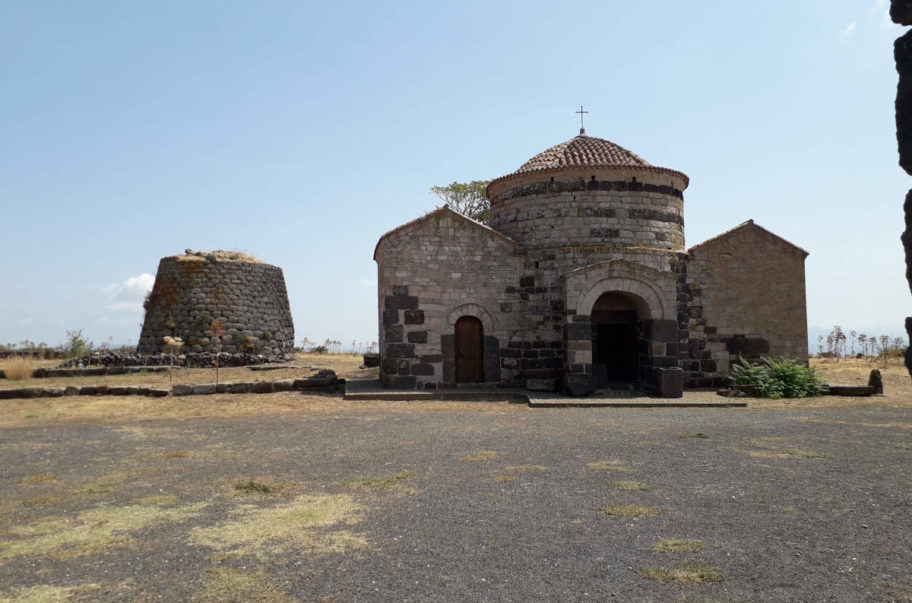Corpo Pagina
The village of Silanus, a small town in the Marghine region in the province of Nuoro, now rises on an area that was populated since ancient times. Indeed, the first signs of anthropization date back to the pre Nuragic and Nuragic periods and are attested by the several archaeological findings scattered over the territory.
Among the most important finds there is the monumental complex of Santa Sabina, which includes a single tower nuraghe built with basalt blocks, with an internal staircase that connects to the upper floor, now collapsed; a large village developed around the nuraghe, but unfortunately only a few traces remain, such as the tomb of the giants of Pedra Pinta and the sacred well of Cherchizzu, with a tholos cupola. The complex is built near the homonymous church, constructed during the 11th century on the ruins of a pre-existing Byzantine structure and even today it is a place of pilgrimage.
The imposing Corbos nuraghe, a single tower in basalt stone, is an important one; it has a residual height of 12 meters and even today is in good state of preservation. The site rises on a hill, about 200 meters from the shore of the river “Riu Su Frusciu”; a few hundred meters away is located the tomb of the giants of S’Abbaia. Near the archaeological area traces of a village and the ruins of a dolmen type tomb with betyls can also be admired.
In the Silanus area there are other important archaeological remains, like the tombs of the Giants Pedras Doladas, Zanchia and Murartu, and also the nuraghi S’Ulivera and Madrone o Orolio. The last one mentioned is one of the complex or polylobate type, mainly made of granite. The central tower, about 12 meters high and originally flanked by two or three other towers, is preserved practically intact. The nuraghe is distinguished by the presence of two superimposed tholos, connected by a main staircase that starts from the entrance corridor, to which a secondary one overlaps. This special and refined structural feature assumes great planning and construction skills; indeed, the studies performed on the structures suggest that the two staircases were built simultaneously, and so the development of the second staircase had been planned before the construction.
The traces of the following periods, characterized by the succession of Punic and Roman dominations, are also very important.
nuraghe Santa Sabina – ph.credits: Khris “khrigel” Karrer – via Flickr.com
Nuraghe Orolio – ph.credits: Gianni Careddu, via Wikimedia Commons
tombs of the Giants di Santa Sabina- ph.credits: Gianni Careddu, via Wikimedia Commons
sacred well of Cerchizzu – ph.credits: Gianni Careddu, via Wikimedia Commons



